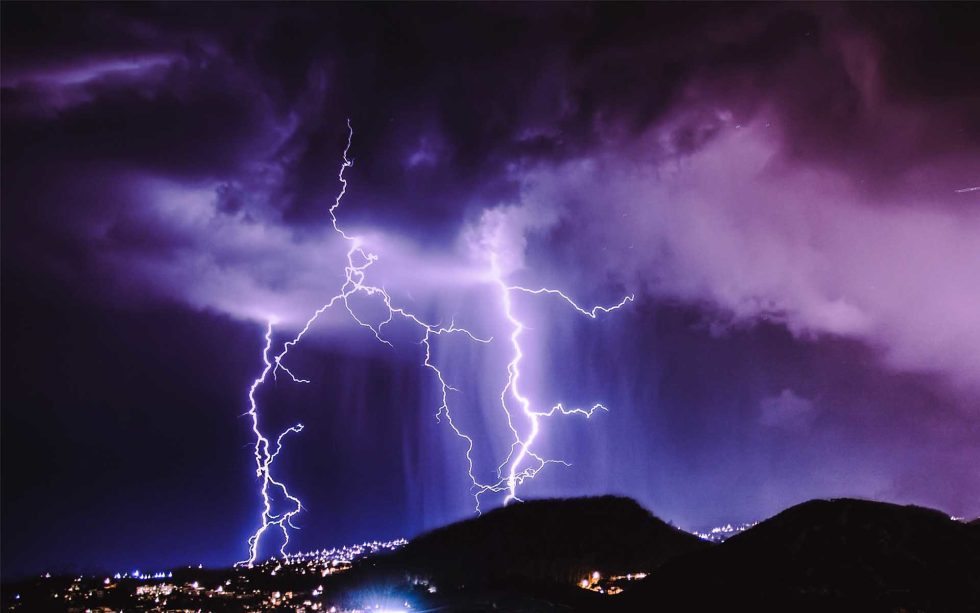Is Lighting Network the second coming for Bitcoin or the coming of centralization? Andreas Antonopoulos states his case for the former in his latest video.
A lot of misconceptions have arisen about the Lightning Network and the effect it will have upon Bitcoin. Look around the internet, and you’ll find videos such as this offering information on the Lightning Network that may not be accurate. To that end, Andreas Antonopoulos has created a video to detail the many things critics are getting wrong, which we have listed below.
Centralization
“Lightning Network will centralize bitcoin, concentrating power with a few big players.”
This assumes that Bitcoin is not already centralized in some way. Without second layer technologies, there are two ways to resolve issues with capacity and increased demands.
- Increase base block size, putting costs of scaling onto node operators and leading to some centralization nodes and mining.
- Push transactions off-chain without current levels of security and trustless operation. This is already happening, whereby transactions are held in the private databases of the large exchanges.
So the choice isn’t between a totally decentralized or totally centralized system. It is a choice between off-chain private and off-chain secondary layers with trustless systems.
Channels and Paths
“Lightning Network requires each transaction to open and close a new channel.“
Many people think that each transaction operating on the Lightning Network needs to open a new channel. The cost of funding and settling each transaction in this case would be huge. A transaction actually just needs a path, and Lightning Network clients can deal with the routing of transactions automatically.
Some also believe that channels must be closed to get settlement, but this is also not true. Payments can be made again, so funds can stay within the network and don’t have to be cashed out. Most of this will be done with wallets and not manually.
People have taken these misunderstandings and created the impression the network will inevitably centralize into a hub and spoke analogy. This will become clearer in time, but there are several alt-chain options for those who prefer on-chain scaling.
Routes and Nodes
“Lightning Network uses the ‘Hot Potato’ model of routing.”
In this model, each node passes the ‘Hot Potato’ to the next node willing to take it closer to it’s destination. Each intermediate knows the source and destination of the packet, but Lightning Network uses an entirely different model called source routing.
The originating node receives information about all available nodes, such as capacity and fees. It then creates an optimal path based on these parameters, such as lowest overall cost of route. This route is then encrypted at each step and onion-skinned. Each intermediate knows only the node which the transaction has arrived from. It then removes a layer of onion and discovers the next node that it must be sent to.
The final destination node is the only one which knows that it doesn’t need to go any further. The originating node is the only one which knows that it didn’t arrive from somewhere else.
Locking Value into the System
“If each channel needs funding to stay open, that will lock up a lot of value in the system.”
Yes, each channel needs enough value at your end to send the capacity of transactions required. But channels can be refilled to make greater payments, for example, by sending bitcoin to the Lightning Network address.
In fact, this goes some way to prevent centralization. Trying to create a node connecting many channels holding a lot of bitcoin value becomes a target for hackers. It is more beneficial to have more channels to more nodes in a mesh network than very highly-funded centralized nodes.
Anti-Money Laundering
“Node operators will face a lot of risk from AML regulation.”
Not necessarily. In most cases, Lightning Network is intended for the transfer of smaller amounts. In most places, money laundering only applies to money flow of much larger amounts.
It would be difficult to find and prosecute individuals running software on their home computers. If this does become a problem, then it will only make the network become stealthier.
Lightning-Enabled Wallets
“Lightning-enabled wallets come with all the confusion about channels and the need to open and close them.”
It is true that early implementations of Lightning Network did bring technical data to the surface and exposed elements that should have been hidden behind a user interface.
Lighting-enabled wallets should and will look exactly like multi-currency wallets. Sending and receiving will be achieved through QR codes, and the wallet will be able to tell if the address is for Bitcoin or Lightning Network. Everything should be done for you.
So How Do I Get on Board?
If you are interested in running a lightning node, then there are three which are BOLT complaint. This means that they will work with each other to form a unified network. Look for information on LND (lighting network daemon), clightning, or eclair on GitHub or Main Net.
As you can see, Andreas Antonopoulos sets the record straight on a number of misconceptions about the Lightning Network. One should always be careful in that misinformation is constantly floating around on the net and easily found.
What do you think about the rebuttals offered by Andreas Antonopoulos? Do you agree with him or not? Let us know in the comments below.
Images courtesy of YouTube/@aantonop and Bitcoinist archives.
